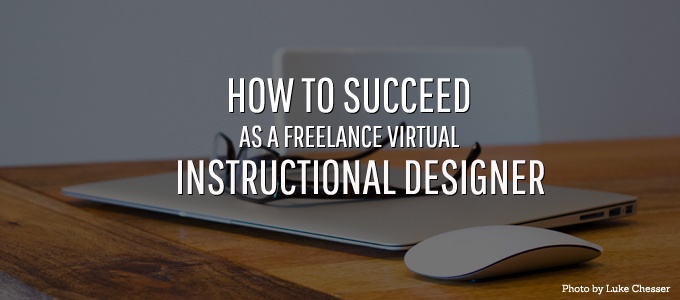Should You Hire Freelance Instructional Designers: 4 Pros And 4 Cons
The freelance industry offers an incredible amount of unique talent when it comes to hiring specialists in Instructional Design. The gig economy has taken off, providing freelancers with more lucrative and varied opportunities. According to the McKinsey Global Institute [1], around 20-30 % of the working-age population in the US and UK now regularly earns a living from independent or arrangements.
The freedom of working multiple gigs has helped to transform the job market for the better. There are more options for those bored with the 9 to 5 hustle. When you need to fill an open Instructional Design position you might consider looking to the freelance world to find an Instructional Designer. If you wish, you can post your Instructional Design job ad here to attract the best talent.
Your best new hire could be waiting to hear from you from among the star freelancers out there. Let’s discuss the pros and cons of hiring a freelance Instructional Designer for your open position.
The Pros Of Hiring A Freelance Instructional Designer
If you are having trouble deciding if hiring a freelance Instructional Designer is the best way to go for your company, be sure to read the pros of doing so in this section.
1. Better Use Of Resources
All companies want their employees and contractors to use their time and resources as best they can. When you decide to hire a freelance eLearning candidate you can streamline the recruitment process. The interviews don’t need to be scheduled in-person but instead over the phone or via video chat. The signing of contracts, NDAs, and non-competes even occur digitally. This saves time and money for your company.
2. Match Candidates To Needs
Your company will be able to better match freelance candidates to individual projects. For example, if a new project calls for a specific set of skills, you might be able to find a freelancer to handle the project quicker than hiring someone from the local pool of talent to work in your office for a brief period. Many freelance Instructional Designers are also Subject Matter Experts so they bring a lot more value to the table.
3. Reduction In Overall Costs
When a company decides to hire a freelance Instructional Designer it will see a reduction in overall costs. The company does not have to pay the freelancer a set salary, health benefits, or other financial perks. All that needs to be done is negotiate a price for the project either in milestones or an overall payment.
4. Flexible
Quite possibly one of the biggest pros of hiring a freelance Instructional Designer is that they will be flexible. Freelancers are typically flexible in all they do because it helps them succeed in their careers. They have the ability to handle multiple clients and multiple projects at the same time. If you need a worker who is very flexible and knows how to adapt quickly, a freelancer can help your company.
The Cons Of Hiring A Freelance Instructional Designer
As with any investment, you should look at both sides to the story, which is why we will now present the cons of hiring a freelance Instructional Designer for your open eLearning position.
1. Extended Training Time
When you hire a freelancer it’s likely you will require extended training time to onboard the worker. They might be in a different time zone or might not have time available each day to complete training. Training someone remotely is much different than training them in-person and your company should take this into account prior to making a hiring decision.
2. Candidates Disappear
Sometimes you will encounter a remote candidate who disappears when you are working with them. They stop answering emails, no longer log onto the chat software, and don’t even answer phone calls. There are times where something serious happens and the candidate experiences an emergency, but most of the time they simply disappear because they get another job, lose interest in the project, or flake out entirely.
3. Possible Language And Cultural Barriers
If you don’t set a requirement for where your freelancers must be located you could run into language and cultural barriers. If this is the case at your company you need to be prepared for these barriers. Foreign freelancers might have a basic education in the English language but they won’t know the slang used or the terminology of the industry.
4. Integration Difficulty
If your remote Instructional Designer needs to work as part of a team, integrating as a member of that team can be extremely difficult. Trying to bring a remote worker onto a team that meets face-to-face daily can be tough, especially if they are not in the same time zone as the team.
There are pros and cons to everything in life. Be sure you look at both sides prior to making a hiring decision on freelance Instructional Designers.
And remember to check out the outstanding Instructional Design candidates who work in both traditional and freelance roles in our candidate resume directory.
References:







